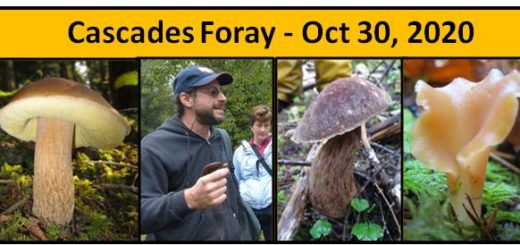Ramaria Mushrooms
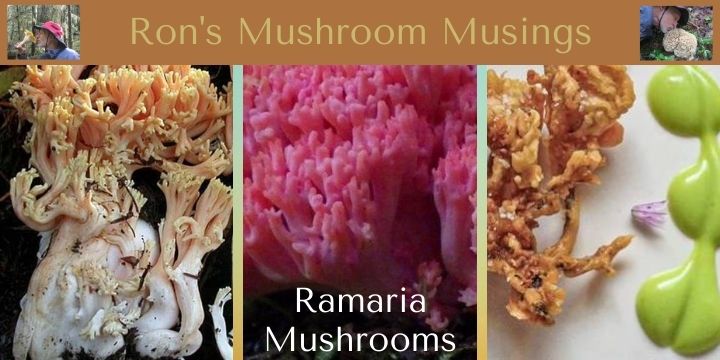
When hiking in the woods, it’s not unusual for Sandy and I to come across different species in the genus Ramaria. These stately looking mushrooms are more commonly referred to as Coral mushrooms due to their obvious similarity to some sea corals. While the generic name “coral” is used for a number of different genera, for this article it will only relate to mushrooms in the genus Ramaria. This genus represents quite a large group of mushrooms that come in a wide variety of colors and sizes. The Bureau of Land Management has posted a very nice picture ID guide of quite a few of our western coral species.
We have often thought about giving these interesting mushrooms a try yet somehow never got around to it. Besides, we were a little hesitant to try them due to a lack of definitive and consistent edibility information among various mushroom book authors. Recently, more research and actual consumption of Ramaria species occurring in the Pacific Northwest has suggested that we do not have any poisonous ones here. That said, having an allergic reaction or experiencing digestive distress after eating one is still possible. So, with this new found edibility information we decided to try a species of red coral mushroom we found at the coast. And, we followed the advice in this little ditty that I wrote to honor this mushroom.
Tasting A Red Coral Mushroom
Little red coral you look so neat,
Growing there at my feet,
Are you something we can eat,
Will you make a tasty treat,
Are you bitter or nicely sweet,
Cooking you is an easy feat,
A pan with butter on medium heat,
Golden brown like winter wheat,
That’s when you know cooking’s complete,
Doesn’t taste like chicken or crabmeat,
More like bacon with a little mesquite,
Just Keep your portions very petite,
It’s always better to be discrete,
Or you could wind up on your toilet seat.
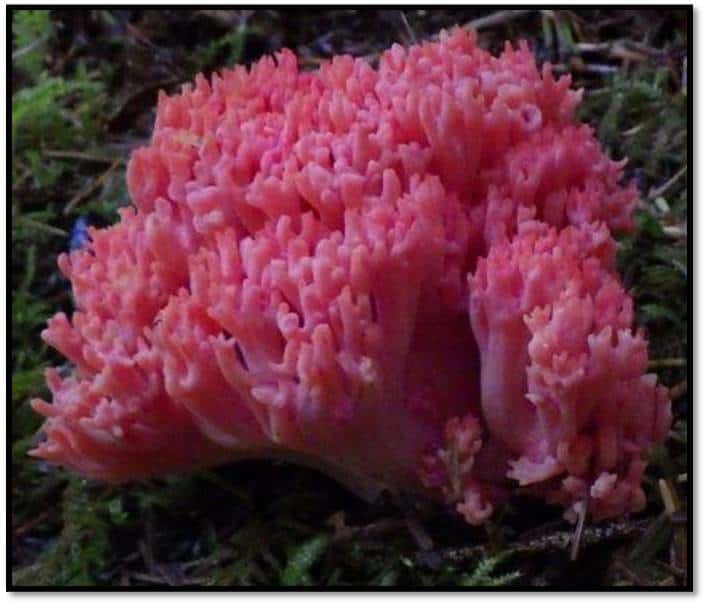
Happily, the flavor of our red coral was quite pleasant and tasted a little like bacon. It made Sandy think of making a fried coral, lettuce, and tomato sandwich. And, there was no digestive upset or need to rush to the nearest bathroom. So, which red coral mushroom did we try? Well, it had all the characteristics of Ramaria araiospora. However, it could possibly have been R. araiospora var. rubella, or R. stuntzii. The good news is that all three are edible, although some books state that R. stuntzii can be slightly bitter. We did not experience any bitterness with the one we ate.
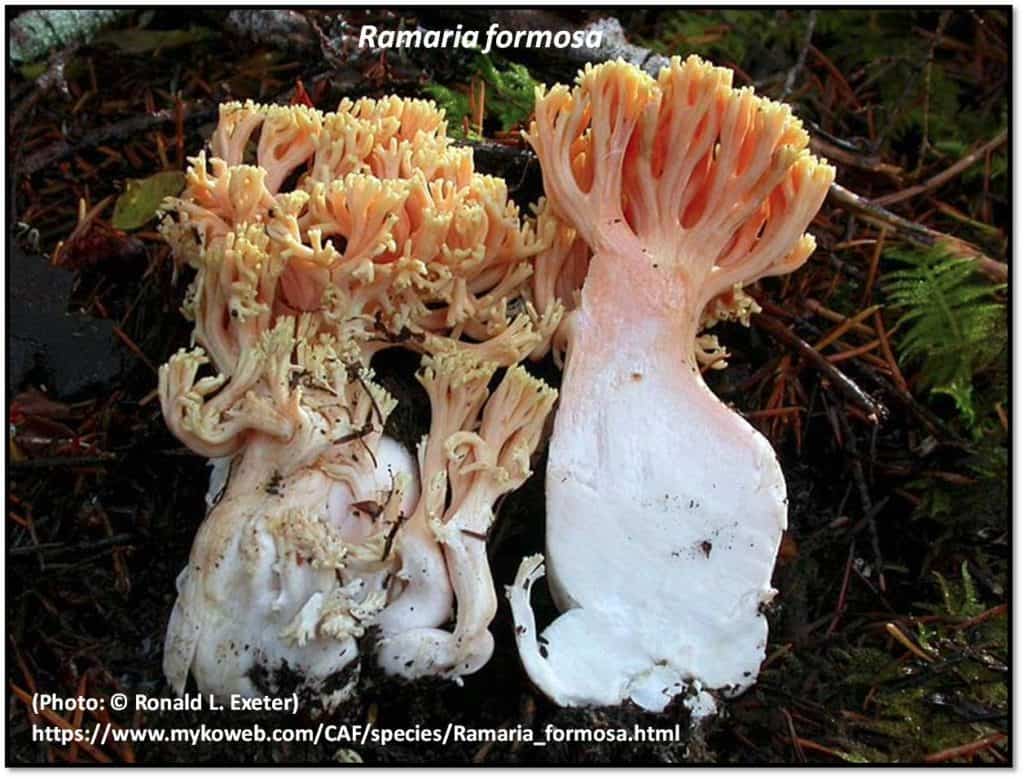
There are still several coral mushrooms to avoid. In Daniel Winkler’s new book Fruits of the Forest, he says to avoid eating any corals with a gelatinous (jellylike) core as well as the yellow-tipped coral R. formosa. To be safe, Daniel recommends avoiding yellow corals that fruit in the fall while those that fruit in the spring seem to be harmless. In Michael Beug’s book Mushrooms of Cascadia, he states that “when identifying brightly colored Ramaria species, at least one specimen must be young and colors must be noted the day the fungus is picked. (all Ramaria species turn cardboard color in age). Also, the specimen must be harvested with its entire base. Once home, cut the specimen in half from top to bottom to help identify to species. Note flesh texture (gelatinous, cartilaginous or fleshy) and look for a rusty stain at base of stipe.” Don’t worry if all this advice seems like information overload as coral mushrooms are not the easiest mushrooms to tell apart.
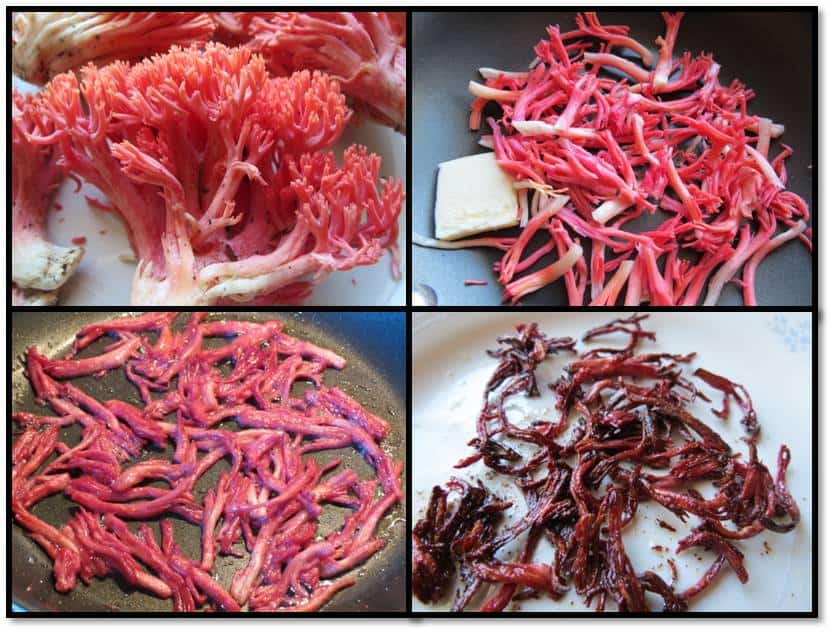
As for cooking our red coral mushroom, we washed it, broke it into pieces, and sautéed it with some butter, garlic powder, and a little salt. You are far better off giving it a little longer in the pan than undercooking it. You can also use oil or garlic infused oil if you’re not fond of butter or if you are vegan. Unfortunately, you also need to check your coral mushrooms for larvae as they also seem to enjoy these mushrooms. Remember to always follow the “eat a small amount” rule and save some of the mushroom just in case someone else needs to identify exactly what you ate. However, knowing what you are going to eat or, as in our case, knowing what species it might be limited to is super important.
In an article in the Forager/Chef (by Alan Bargo), Alan restates a David Arora social media post on different cultures that eat Ramarias. This is an excerpt from that posting on the possible laxative effects of eating coral mushrooms. “Many sources say that corals (genus Ramaria) can have laxative effects. This is true, but the same can be said for most edible mushrooms, especially when not cooked well or eaten in excess. So, the more relevant question is: Do Ramarias have laxative effects with regularity, that is, do they cause gastrointestinal problems more often than do other edible mushrooms? In this 30 Year Toxicology Report by NAMA there are only two reported cases of Ramaria poisoning. This is a low number considering that ramarias are eaten pretty often, at least in the Northwest where pioneering families have vernacular names for them such as “rosebuds” (Ramaria botrytis group). The tables in the NAMA report have to be interpreted with caution because obviously there is no way to know how many people safely eat each kind of mushroom listed, but the data do suggest that ramarias cause far fewer problems than some other popular edibles such as honey mushrooms, shaggy parasols, leccinums, blewits, and chicken of the woods (which caused two deaths, one a small child who ate a small amount raw!). As for their culinary quality, it varies from species to species. Several are sweet and in one tasting involving several people, a yellow ramaria scored higher than morels. Some species, however, can be slightly bitter. As they give off water in the skillet, taste their broth – in some of the yellow species it is quite delicious! They make an excellent side dish and a fantastic jerky. So, I think it worthwhile to experiment with them. But follow the usual precautions of trying a small amount the first time (for each obviously different species) and cooking it thoroughly.”
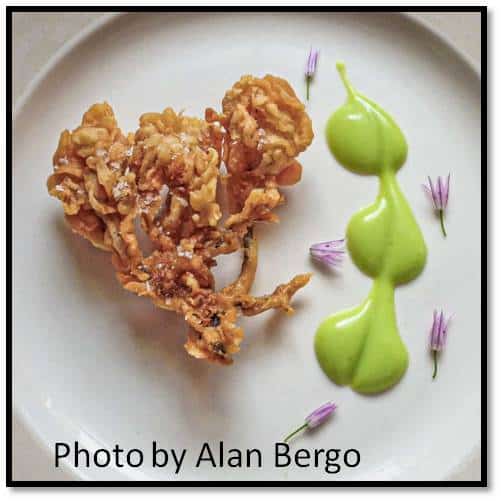
Well, if you think you’d like to try eating a coral mushroom start with those easiest for you to identify. Or, pick a color that’s the least problematic, as we did. Do not rely solely on pictures as the same species can vary in color and each camera/phone seems to have different degrees of contrast settings, white balance and color saturation. Better yet, go with someone who has harvested and eaten coral mushrooms. They are quite plentiful and might be another unusual mushroom to add to your culinary list of edibles. Anyone up for some crispy fried coral mushrooms with a side of aioli? If so, check out Alan Bergo’s Forager|Chef website for this recipe.
Stay safe, hike often, and always be sure of what you harvest to eat. Ron


